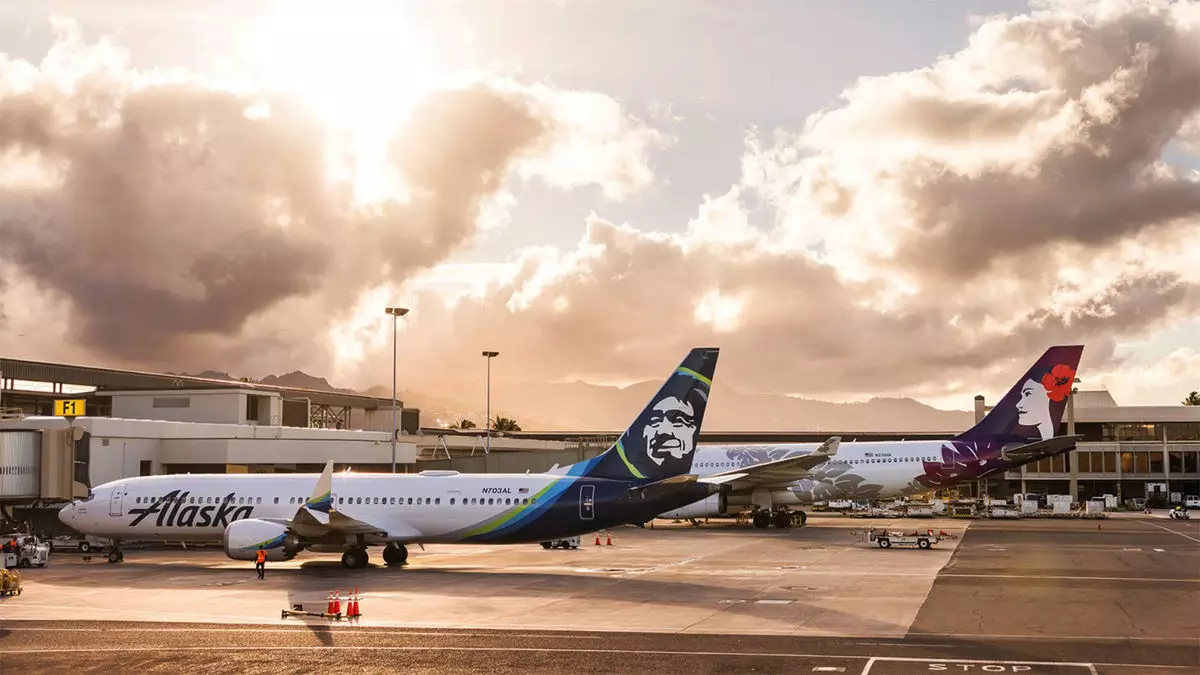In a significant strategic move, Alaska Airlines has finalized its $1.9 billion acquisition of Hawaiian Airlines, a decision that has been swiftly approved by the Transportation Department. This acquisition not only enhances Alaska Airlines’ already robust operational framework but also places them in a pivotal position within the airline industry. With the completion of this deal, Alaska Airlines now boasts an impressive network of nearly 1,500 daily flights to 141 destinations, backed by a fleet of 350 aircraft that includes models from Airbus, Boeing, and Embraer. This expansion firmly establishes Alaska Airlines as a formidable player in the aviation landscape.
Despite the scale of this acquisition, it is crucial to note that Alaska Airlines emphasizes maintaining the distinct identities of both brands. For the foreseeable future, Hawaiian Airlines will continue to operate independently, with separate passenger service systems, booking platforms, and loyalty programs. This approach not only respects the unique brand heritage of Hawaiian Airlines but also ensures that the transition process does not disrupt services for current passengers. The strategic decision to keep operations separate until obtaining a joint operating certificate from the FAA reflects a careful, customer-centric approach that prioritizes service continuity.
While many structural elements of the airlines will remain unchanged initially, several immediate benefits are being introduced for customers of both carriers. Notably, Alaska Airlines lounge members will soon gain access to Hawaiian Airlines lounges when traveling on Hawaiian flights, which is a positive step towards enhancing customer experience. Furthermore, Alaska Airlines plans to enable ticket purchases on either airline’s website shortly, streamlining the booking process for passengers. A significant highlight of this integration is the recently unveiled Huaka’i program, aimed at providing Hawaii residents with exclusive discounts on interisland flights, thus fostering greater accessibility for locals.
The integration of loyalty programs represents a long-term opportunity for enhancing traveler benefits. Frequent flyers will soon be able to transfer miles between the Alaska Mileage Plan and HawaiianMiles programs without incurring any fees, further incentivizing customer loyalty. The planned establishment of a unified rewards program by 2025 promises to offer even greater benefits, aiming to position Alaska Airlines at the forefront of customer rewards in the airline industry.
Alaska Airlines CEO Ben Minicucci conveys an optimistic outlook regarding the acquisition’s future impact, asserting that the partnership will unlock growth opportunities and provide substantial benefits to customers. The commitment to transparency, with further details on the rewards program set for mid-2025, reflects a proactive approach in ensuring customer satisfaction during the transition.
The acquisition of Hawaiian Airlines by Alaska Airlines is not merely a merger of two entities; it represents a calculated strategy aimed at expanding Alaska’s footprint while ensuring customer loyalty and satisfaction remain at the forefront. By preserving brand identities and gradually integrating services and loyalty programs, this transition has the potential to reshape the competitive landscape of the airline industry, ultimately benefiting travelers across the board.


Leave a Reply